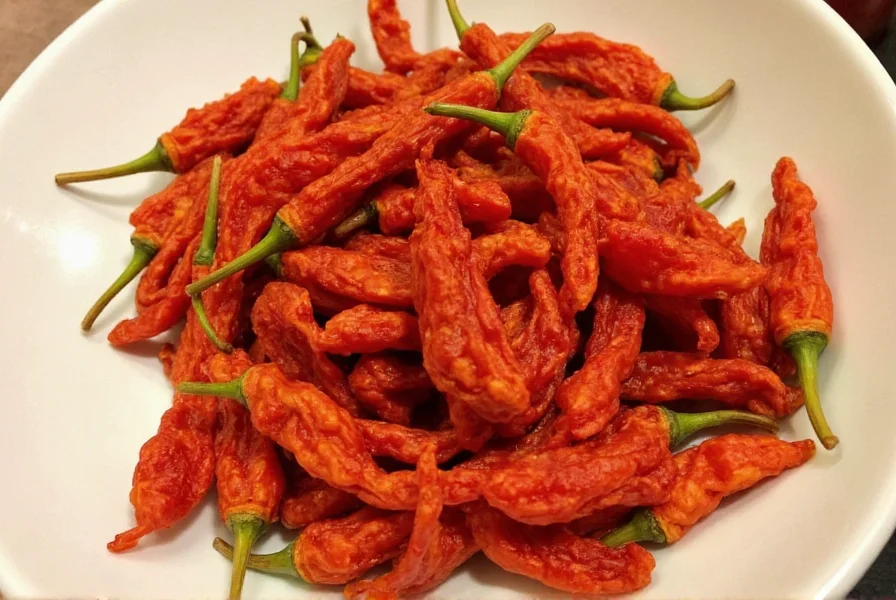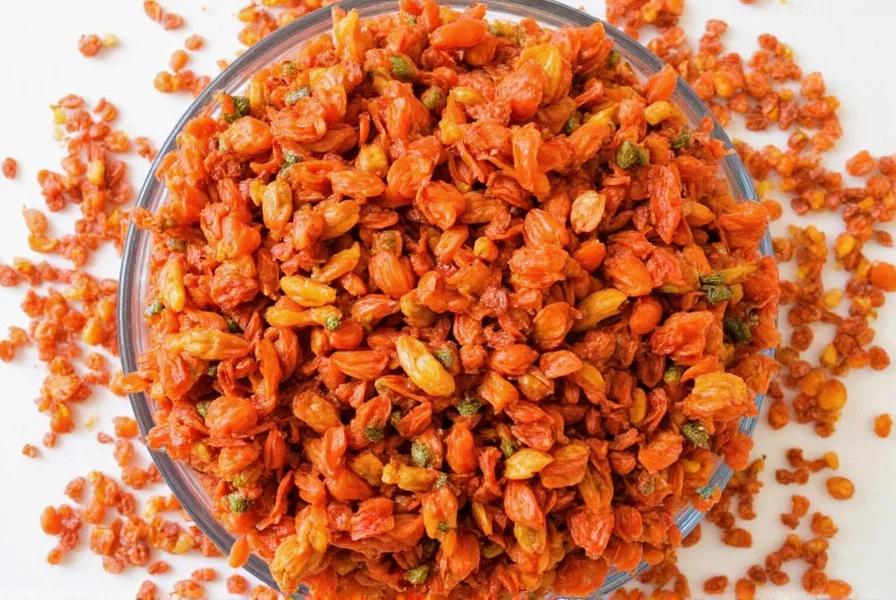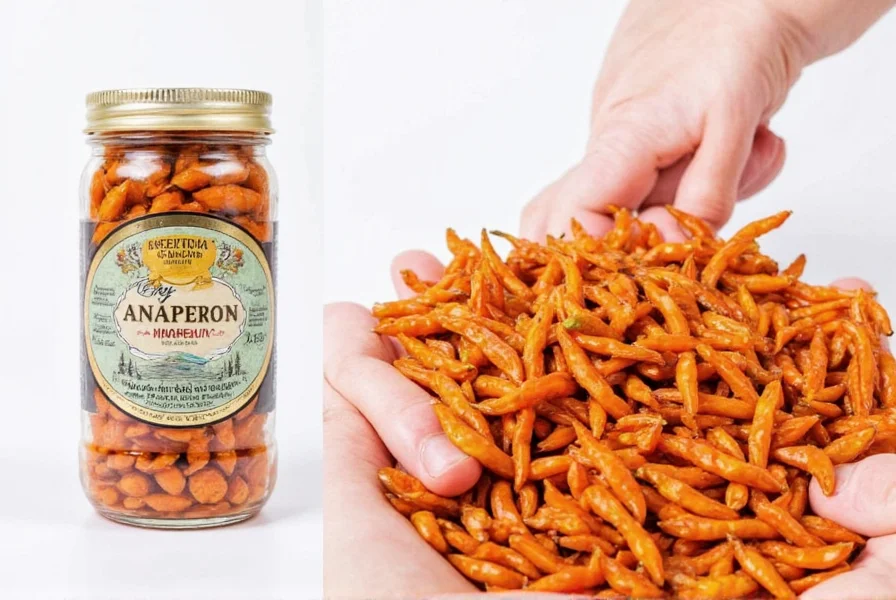How to Use Dried Anaheim Chili: A Step-by-Step Guide
Looking to add smoky warmth and mild heat to your dishes without overwhelming spice? Here's exactly how to use dried Anaheim chili in your cooking, from rehydrating to recipe ideas. This versatile pepper is perfect for adding flavor without too much heat.
Quick Guide to Using Dried Anaheim Chili
- What is a Dried Anaheim Chili?
- Flavor Profile & Heat Level Explained
- Why You Should Use Dried Anaheim Chilies
- Top 5 Cooking Tips with Dried Anaheim Chilies
- Rehydrate vs. Roast – Best Methods
- Buying Guide: Choosing the Best Dried Anaheim Chilies
- Storage Tips That Actually Work
- Recipe Ideas Using Dried Anaheim Chilies
- Anaheim vs. Other Dried Chilies: Flavor Comparison
- Final Thoughts: Is the Dried Anaheim Chili Right for You?
- Frequently Asked Questions About Dried Anaheim Chilies
What is a Dried Anaheim Chili?
The Anaheim chili, originally cultivated in New Mexico but named after Anaheim, California — where it became widely popular — is a mild, medium-sized chili pepper known for its versatility. When dried, it retains much of its earthy sweetness while developing a slightly smoky edge that can enhance a wide range of dishes.
These chilies are typically about 6–7 inches long, with thick skin and a deep red or reddish-brown color when fully matured and dried. They're often used whole, ground into powder, or rehydrated for sauces, stews, soups, and more.

Flavor Profile & Heat Level Explained
If you're looking for fire, skip ahead to ghost peppers. But if you want flavor with just enough kick to keep things interesting, the dried Anaheim chili delivers in spades.
- Heat Level: 500–2,500 SHU (Scoville Heat Units) – generally milder than jalapeños
- Taste: Sweet, earthy, slightly fruity with a hint of smoke
- Texture: Firm when dry, softens when rehydrated
Why You Should Use Dried Anaheim Chilies
Dried Anaheim chilies may fly under the radar, but here's why they deserve a permanent spot in your pantry:
- Versatility: Great for sauces, salsas, soups, and even desserts.
- Easy to Store: Lasts months when stored properly — no fridge needed!
- Balanced Flavor: Mild heat meets rich depth — perfect for family-friendly meals.
- Affordable: Cost-effective compared to other specialty dried peppers.
Top 5 Cooking Tips with Dried Anaheim Chilies
- Toast Them First: Lightly toast over dry heat to unlock their nutty, smoky undertones before grinding or rehydrating.
- Don't Skip the Seeds (Unless You Must): Most of the heat lives in the seeds — remove for milder flavor or leave them in for a gentle punch.
- Rehydrate Smartly: Soak in hot water or broth for 20–30 minutes until soft, then blend into sauces or pastes.
- Use Whole for Infusion: Simmer whole chilies in soups or stews for subtle background heat and flavor.
- Grind for Custom Spice Blends: Make your own chili powder by drying and grinding roasted Anaheim chilies with cumin and garlic.
Rehydrate vs. Roast – Best Methods
| Method | Best For | Pros | Cons |
|---|---|---|---|
| Rehydrate | Sauces, pastes, salsas | Preserves natural flavor, easy prep | Takes time (~30 mins) |
| Roast | Rubs, marinades, tacos | Enhances smokiness, adds depth | Requires extra step |
Buying Guide: Choosing the Best Dried Anaheim Chilies
Not all dried Anaheim chilies are created equal. Here's how to pick the best ones for your next culinary adventure:
- Freshness Matters: Look for deep red or brownish tones — avoid pale or faded chilies.
- Texture Check: They should feel firm but pliable; overly brittle chilies may be too old.
- Brand Comparison:
| Product | Features | Best For | Price Range |
|---|---|---|---|
| El Yeyo Dried Anaheim Chilies | Packaged whole, organic, non-GMO | Homemade sauces, soups | $6–$8 per oz |
| MexGrocery Bulk Anaheim Pack | Whole and broken pieces, affordable bulk option | Cooking large batches | $4–$5 per lb |
| Trader Joe's Dried Chile Pods | Pre-packaged small bag, consistent quality | Quick pantry staples | $3–$4 per pack |

Storage Tips That Actually Work
To make sure your dried Anaheim chilies stay flavorful and ready for action:
- Air-Tight Container: Store in glass jars or sealed plastic bags away from light and moisture.
- Cool, Dry Place: Cupboards or pantries are ideal — humidity is their enemy.
- Freezer Option: For extended shelf life, freeze them in vacuum-sealed bags up to 2 years.
Recipe Ideas Using Dried Anaheim Chilies
- Green Chile Chicken Enchiladas: Rehydrated chilies blended with cream cheese make a dreamy filling.
- Smoky Bean Chili: Add chopped dried Anaheim chilies to your next pot of chili for depth and warmth.
- Chili Oil: Toasted chilies infused in oil create a flavorful condiment for noodles, rice, or grilled veggies.
- Mole-Like Sauce: Blend with nuts, spices, and chocolate for a mellow version of mole sauce.
Anaheim vs. Other Dried Chilies: Flavor Comparison
| Chili Type | Heat Level | Flavor Notes | Best Used In |
|---|---|---|---|
| Anaheim | Low-Medium (500–2,500 SHU) | Sweet, smoky, earthy | Soups, sauces, enchiladas |
| Jalapeño (Dried = Chipotle) | Medium-High (2,500–8,000 SHU) | Smoky, spicy, tangy | Meat rubs, adobo sauces |
| Guajillo | Medium (2,500–5,000 SHU) | Berries, tea-like notes | Salsas, moles, marinades |
| Arbol | High (15,000–65,000 SHU) | Grassy, sharp bite | Oils, hot sauces |
Final Thoughts: Is the Dried Anaheim Chili Right for You?
If you're someone who loves building layers of flavor without overwhelming spice, the dried Anaheim chili deserves a standing ovation. Whether you're a home cook experimenting with Mexican cuisine or a pro chef crafting nuanced sauces, this chili brings balance, warmth, and a touch of nostalgia to every dish.
So next time you're staring into the abyss of your spice rack wondering what to add to your stew or stir-fry, grab those dried Anaheim chilies. They won't shout, but they'll definitely sing — sweetly, softly, and deliciously.
Frequently Asked Questions About Dried Anaheim Chilies
How hot are dried Anaheim chilies compared to fresh?
Dried Anaheim chilies tend to be slightly more concentrated in heat than fresh ones, but still remain in the mild to medium range (500-2,500 SHU). The drying process concentrates flavors including heat, but Anaheim chilies are still milder than jalapeños.
Can I substitute other chilies for dried Anaheim in recipes?
Yes, the best substitutes would be dried New Mexico chilies (very similar) or mild pasilla chilies. For recipes calling for a small amount, you could use a 1:1 ratio. For larger quantities, guajillo chilies would work but offer a fruitier flavor profile.
How do I rehydrate dried Anaheim chilies properly?
The best method is to remove stems and seeds, then soak the chilies in hot water or broth for 20-30 minutes until they become pliable. For deeper flavor, toast them lightly in a dry skillet first, then soak.
What's the difference between dried Anaheim and New Mexico chilies?
Anaheim chilies are actually a variety of New Mexico chilies. The main difference is regional naming conventions - what's called "Anaheim" in California is often labeled "New Mexico" elsewhere. They're essentially the same pepper with minor variations based on growing conditions.
Are dried Anaheim chilies the same as California chilies?
Yes, dried Anaheim chilies are sometimes marketed as "California chilies" though this can cause confusion with the fresh bell pepper variety. When dried, Anaheim chilies develop a slightly smokier profile than their fresh counterparts.
How long do dried Anaheim chilies last in storage?
Properly stored in an airtight container in a cool, dark place, dried Anaheim chilies will maintain good flavor for 6-12 months. For extended shelf life, store them in the freezer where they can last up to 2 years.
Can I eat dried Anaheim chilies raw?
While technically possible, dried chilies are generally too tough and concentrated to enjoy raw. They're meant to be rehydrated, toasted, or ground before use to develop their flavor and make them palatable.











 浙公网安备
33010002000092号
浙公网安备
33010002000092号 浙B2-20120091-4
浙B2-20120091-4